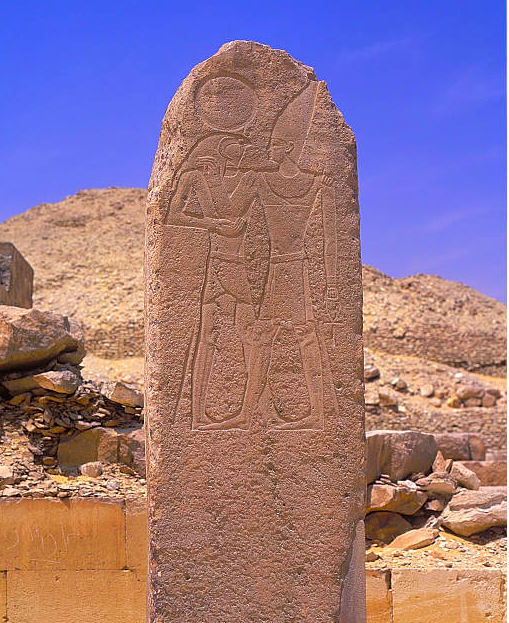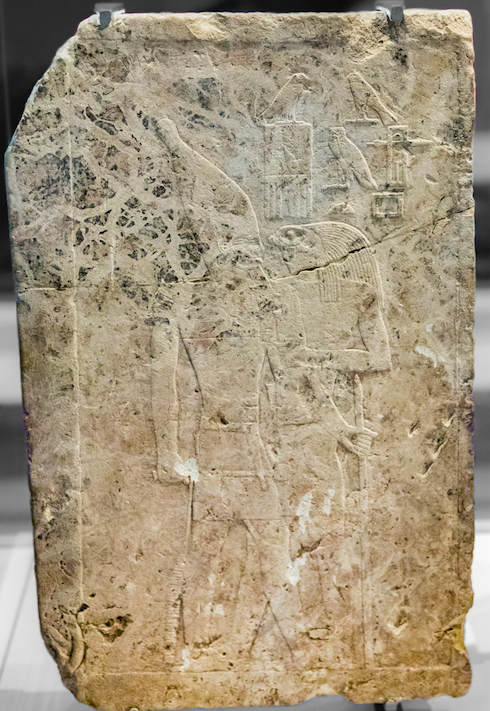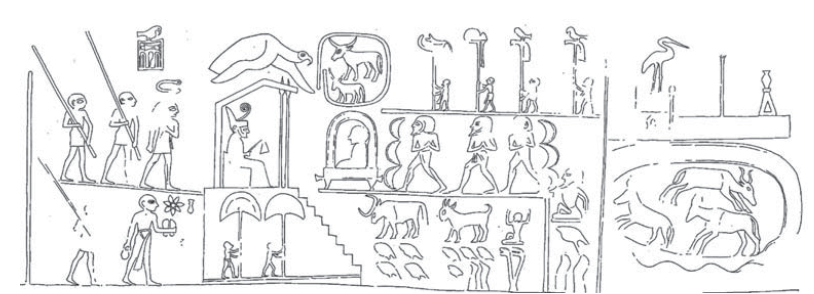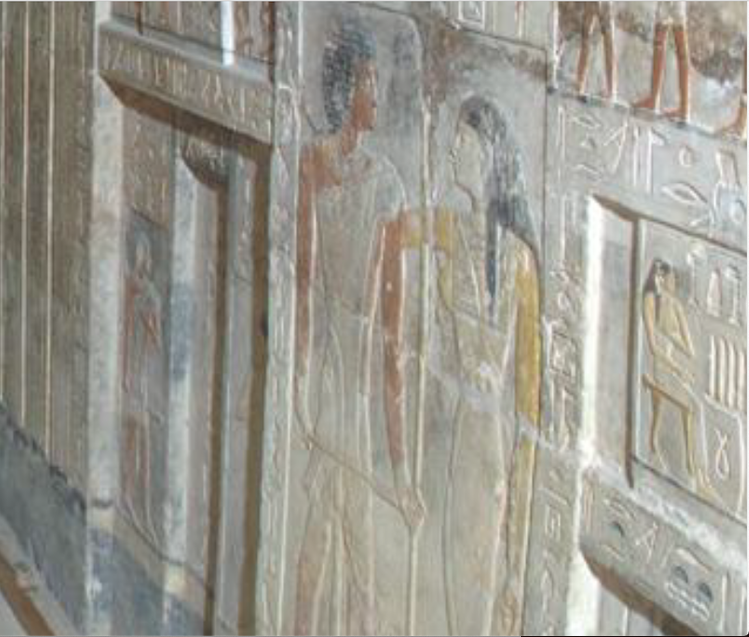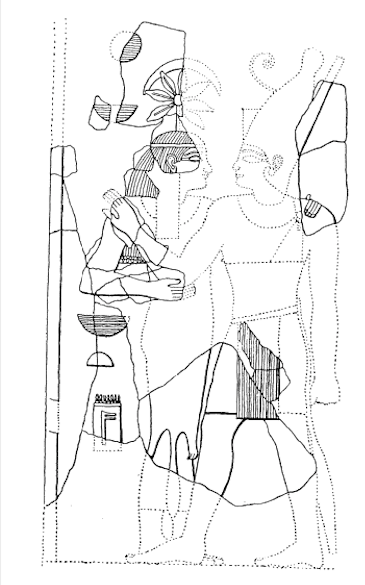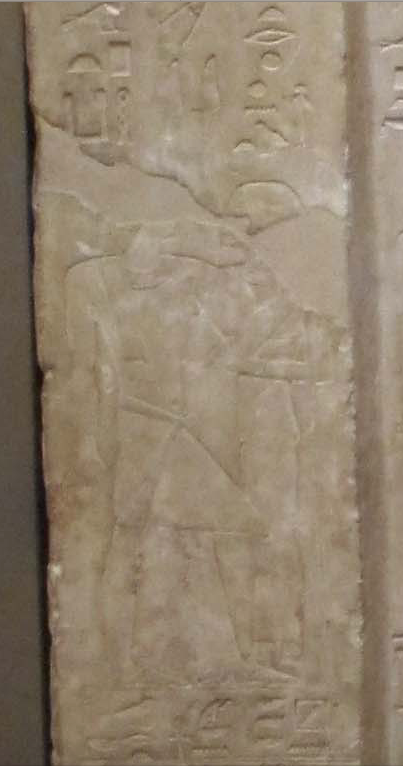Marriage and « false door »
The embrace of the spouses is attested again near a « false door », in the mastaba C non inscribed, Giza, East wall. Vth dynastie ;
This scene of union symbolised the union of humanity (= the spouse) with the creator god Rê (the husband) (cf. supra Sameri's false-door et infra nuptial chamber).
That's why we find the scene, sometimes unscribed, in relation with the false-door which has the same signification : it allowed the owner to « go out », i.e. to revive as Rê conjugally (forthcoming paper) united with Maât/humanity:
cf. TP 260 § 319 (W/A/W 37) :
« N (=Osiris-Rê) goes out in this day, in this true form of spirit Akh in life,
that N might break battle, cut turbulents.
N goes out for Maât (jpr N, jr Maât), that he might bring her/offring, as she is near him (jnt=f s js ?r=f) (...)
§ 323 N goes out in this day, the N might bring Maât/offering who is near him (pr N m hrw pn, jnt=f M??t js ?r=f)».
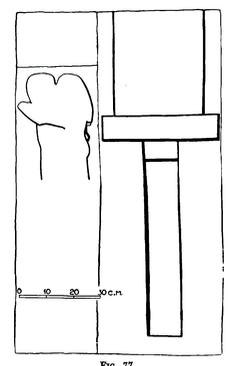
mastaba C uninscribed, Giza paroi Est Vth dynastie; cf. Abu-Bakr, Excavations at Giza, Western cemetery, pl. 53, 1949-1950.
Laure de Lamotte ©
Last edited: 22/05/2021
Add a comment



